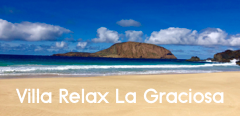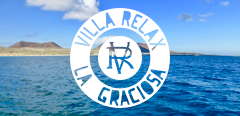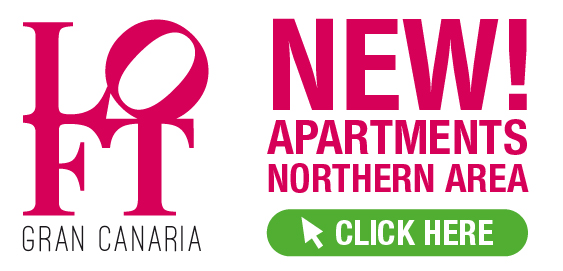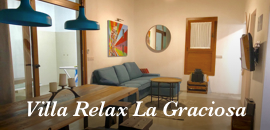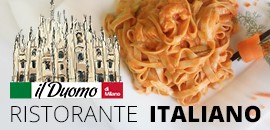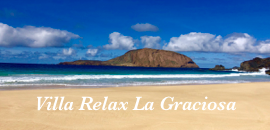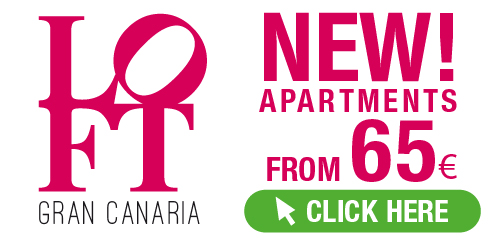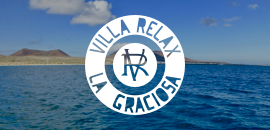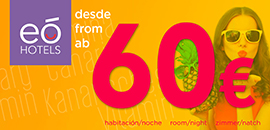The History of Maspalomas
In the fifteenth century , the term ” Maspalomas” referred to a greater extent than is now known by that name . The coastal strip formerly called the ” Doldrums Maspalomas ” extended from the castle to Romeral ” puntón ” Santa Agueda , excluding the bay of the same name ( Arguineguin ) . Over time , the name is geographically focused on the southern tip of the island of Gran Canaria , appearing in various maps , the name of Maspalomas beach , ” Charco ” Maspalomas , Maspalomas Canyon loin Maspalomas Maspalomas and people .
The village of Juan Grande was called ” the door of the desert” ; due to the aridity of the coastal landscape to Arguineguin. Amidst this wasteland , as if it were a gem , we find the Maspalomas dunes formed by a dune system of marine origin and an oasis , which highlights the Charco brackish water , and flora and fauna develops around, highlighting the palm . The rest was a rocky place where dominated by cacti and euphorbias .
This area has been inhabited since time by aboriginals , as evidenced by archaeological finds from the necropolis of Lomo de Maspalomas (dates ranging between X and XV) , near the aboriginal town of Lomo Perera, or the typical houses aborigines are located on the coast : as Punta de Mujeres , Meloneras , or Llanillo Mountain Arena . This whole area belonged at the time of the conquest, the guanartemato (kingdom) of Telde. The ” Aboriginal Maspalomas” were based on the exploitation of cattle , cereal crops , fisheries (shellfish and fish) and the use of all that nature provided in Maspalomas Oasis economy.
In 1477 missing conquer La Palma , Tenerife and Gran Canaria , where the Catholic Monarchs who decide to undertake it. The conquest of Gran Canaria began in 1478 and ended with the surrender of Aboriginal Tirajana on the tops of the April 29, 1483 . After the military conquest , the conqueror Pedro de Vera , by order of the Catholic Kings , became the Governor or Corregidor. Which would be constituted until the nineteenth century the only local institution , the council or council , to carry out the distribution of the lands and waters of the island between the conquerors and partners. In this division , the county of Tirajana (and obviously Maspalomas) was included in the third district , remaining most of their lands and waters under the power of the Crown as public and unappropriated for failing the people from claiming .
The area was depopulated Aboriginal people to flee to the mountains of the island during the conquest . There were only shepherds of cattle, camel herders and farmers in some other areas of the island illegally occupying land .
In addition , these beaches of ” Stills Maspalomas ” served as natural ports and therefore were traveled by boats of all kinds : fishing boats ; ships carrying timber from forests in other ports of the island or off the island ; ships plying the route to the Indies, like Columbus on his fourth voyage in 1502 ; or the most famous ships of the literature of adventure, pirate ships . With regard to the pirates , I must say that these visited the area since the sixteenth century to the first third of the nineteenth century ; highlighting the visit of Dutch Van der Does Peter after his failed attempt to invade the island in 1599 , who landed in Maspalomas to bury their dead and get water and firewood.
Thereafter the area known as ” Maspaloma ” or Maspalomas, gradually began to be repopulated during the seventeenth and eighteenth centuries. The search for new pastures for livestock, new lands for cultivation and increased population of the island of Gran Canaria, caused the island government , the Cabildo, granted new datas . However, many of these lots of land were illegal for not having the consent of the King of Spain , as with the data of the ” plain Axulagal ” the origin of the town of Maspalomas.
1624 : the dating of ” flat Axulagal ” or ” Ajulagal ” at the end of ” Maspalomas ” was granted by the Cabildo, the December 6, 1624 the ruler of the island Simon Lorenzo Acosta.
1630 : Simon Lorenzo Acosta sold to Baltasar and Juan Perez de Villanueva brothers.
1635 : the data was annulled and replaced by the inspector and representative of the Crown , Luís Henríquez , who at first said Public lands and unappropriated for not having proper Royal license, and then allowed the continuation of the land use for fear of lack of grain for the locals .
1680 : The problem ended when the heir to the Peres Villanueva brothers , Mateo Perez de Villanueva, this time down by the Court of the Canaries , got the legal title by royal Decree of King Charles II.
As will be seen , took 50 years for the Pérez Villanueva family could legally enjoy their properties. These Arteara bordered to the north , south to the sea , to the west and east Ayagaures Casillas de Lezcano, including Water Canyon Fataga and Charco de Maspalomas, with its pastures and wild abejeras . Following on from Maspalomas and Charco then became a farm unit , the Cortijo de Maspalomas , which would allow the gradual settlement of the area by settlers .
In the early eighteenth century, the House will acquire Amoreto Cortijo de Maspalomas , which will become part of his primogeniture , where farmhouses as John Grande, Arguineguin or Amurga were . The family Amoreto husband became the principal holder of the southern lands , and in 1785 his primogeniture anexionaran the title of Conde de la Vega Grande de Guadalupe , which had granted Carlos III in 1777 Don Fernando Bruno del Castillo, heiress of Amoreto , Doña María Luisa Amoreto family. From this moment, Maspalomas became part of the Vega Grande County and the only one commanded in these lands was the Count, to an extent that would not allow ” nor fabricase or would increase ” the number of neighbors within its grounds in the place of ” Maspalomas ” except sharecroppers or laborers who worked for Count .
Since then the history of Maspalomas farmhouse has been linked to the Conde family , not just the people but the municipality of San Bartolomé de Tirajana and part of the island. The Conde de la Vega Grande had since the late nineteenth century almost 33 % of the municipality of San Bartolomé de Tirajana , this figure rising to 37% in the twentieth century. Its main properties , by extension , were in the south, dedicating them entirely to agricultural and livestock , until the appearance of touring.
In 1961 , Count Alexander del Castillo, called the “International Competition Maspalomas Costa Canaria ” which would mean the beginning of the promotion as tourist destination of Maspalomas. The competition was won by the French company Societe Pour L’ Etude d’ Amenagements Tecnique Planifiés ( SETAP ) , whose project was the most environmentally friendly , although subsequent “boom” tourist alter much of the natural environment. From overnight , the area known as Maspalomas became one of the most important tourist centers in Spain , erasing its agrarian past few decades .
Old town of Maspalomas:
We allow ourselves the license to call Old Town ‘s historic buildings and ethnographic buildings that are still standing and have disappeared in the current Mayor Marcial Franco Street , as the religious, economic and social center of the indigenous people of Maspalomas.
The Elder & Fyffes stock .
The Porch .
The Butler House .
Garage del Conde.
Condal House Maspalomas and chapel .
Homes workers.
Wall.
Rooms tools.
The Age .
Cuarterias of Buenavista.
” EARL ROAD “
This private road was busy , from the eighteenth century to the twentieth century, by the various counts of the Vega Grande to access their southern possessions. It became the main means of communication by land to the people who lived and was moving south end of the island , extending from Agüímes to Arguineguin.
Its importance lies in its influence as a benchmark in the resort of Maspalomas , since the people had a linear growth , concentrating the houses along that road. It became the main street and the main buildings on it and most of the houses of the county workers were located. The Mayor Marcial street Franco was part of the old “Camino del Conde ” and is the only place where we can , today, we find certain buildings at the foot of the old town.
We should also mention the missing Wall, which marked the village. This became a peculiarity , since the houses lining the south bank of the “Camino del Conde ,” and the ” White Wall ” on the opposite bank , hiding behind, crop fields .
HOUSE OF THE COUNTS OF SAN FERNANDO MASPALOMAS
This stately two-story house , is best known among the villagers as La Casa de Dona Candelaria, one of the heirs of the Vega Grande County . Was not used as a residence , as is the case of Barcelona Casa de Juan Grande, but is occasionally used the occasion of the visit of Count with any family member to Maspalomas. The house , like the chapel , no date of construction, but the information that exists is thought , which is an eighteenth century building which has undergone various interventions into the twentieth century. In 1985 he was declared of Cultural Interest by the Government of the Canary Islands for their historical and artistic interest , hence it is in perfect condition, although refurbished as exhibit space.
The main house in Maspalomas county was in a strategic location and surrounding outbuildings and other points of ethnographic interest were ready .
CHAPEL OF SAN FERNANDO EL CHICO
This hermitage private employer meets the characteristics of a family chapel of Franciscan style that is part of the manor , that is, the Catalan House . From the eighteenth century to the twentieth century , it served as a place of prayer for farm workers and to Maspalomas owners thereof in his visits there . Inside are pictures of San Isidro Labrador and the San Fernando Chico, principal saint of the town that gives its name to the chapel . The condition is quite good, although access is restricted as it remains private .
PRECINCT HOUSE ANNEX TO COUNTS
In the East side of the house the entrance gate , which in turn is used to enter an annex room where we found the quarter- tools, was Conde garage or Butler and Butler House Marcial Franco. At present there are none of these buildings and instead were manufactured buildings.
Rooms tools :
These units , whose age can not be determined , stood in line next to Barcelona House , along the “Camino del Conde ” and bounded on the other side with the alpendre . They serve the function of warehouse tools and some agricultural products . This construction disappeared in the seventies due to a fire that also affected the Butler House .
Butler House :
Terrera This house was built in the mid- twentieth century by Don Marcial Franco, Count Butler and Mayor of San Bartolomé de Tirajana. Stood within the enclosure attached to the manor house , which was also the garage . At the same time , the whole enclosure was walled and gated , including La Casa Condal, giving an appearance of outward fort . This house had to be demolished after the fire that hit the quarter- tools.
Earl ‘s Garage :
County had the Vega Grande County since the foundation in 1777, a carriage was used to transport the aristocratic family , so we think that this garage worked as such since the nineteenth century. Later , well into the twentieth century, animal -drawn carriage was replaced by the car , and the garage was also used by the butler Marcial Franco; so many locals remember him as the butler garage .
ERA
Faced with the Catalan House , Wall deviated from its linear path for discovering a horseshoe-shaped space devoted to threshing grain : the era. There wheat , barley and millet collected to be beaten and get the grain , which after passing through the water mill of El Lomo , would become flour or roasted maize meal were carried . In this work mules and oxen were used mainly . Its activity dating from the eighteenth century to the sixties of the twentieth century.
Between the era and the home county , we find La Prensa, so called , jokingly , two large trunks of Canarian pine farmhouse where workers were to receive ” news ” that is , the orders of the Count or the butler. It was also a meeting point where rest and learn about what was happening in the village.
EL ALPENDRE or ” Porch of Love “
Currently , this building is still standing, but operating as a restaurant and home, so it is logical to have undergone various modifications that do not correspond with the original building . Although this plant is almost the same and are within vestiges of its former use as a stable and barn.
THE STORE ” FAIFE ” ( FYFFES ) O ELDER & FYFFES DETC . ( WAREHOUSE EARL )
The English company Naviera – Frutera Fyffes , Lted . He settled in Gran Canaria in the late nineteenth century. In Maspalomas, from the late nineteenth century, the company had rented a warehouse County next to the ” Alprende of Love .” This branch was one of the first in the South, if not the first . Was engaged in the collection, sorting and exporting tomatoes mainly bananas and places . Later , it would be the count of the Vega Grande himself who became an exporter using the store. In the seventies of the twentieth century, this building was also destroyed.
HOUSES OF SETTLERS .
From the House to the current Barcelona football stadium Maspalomas, along the “Camino del Conde ,” the homes of sharecroppers , laborers , farmers , workers, etc. .. were the Count , with the advent of tourism and land speculation were disappearing . Moreover, we must not forget that the people of Maspalomas has grown thanks to the meeting of neighborhoods scattered houses like Lomo , Buenavista or La Corte , named for the presence of the Reyes family .
